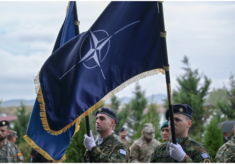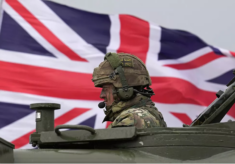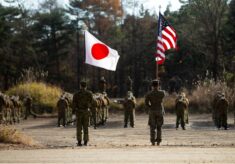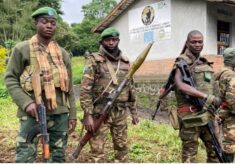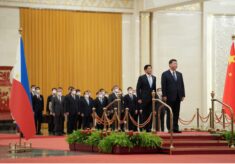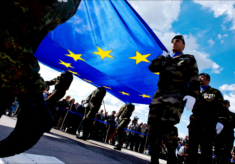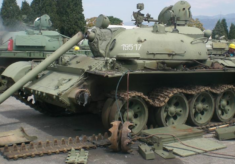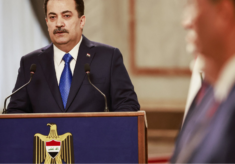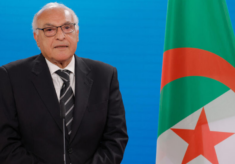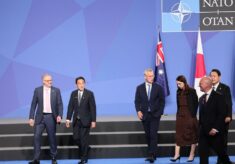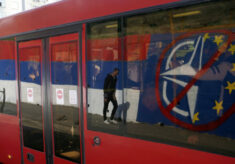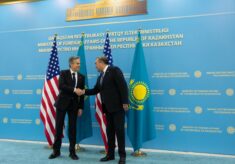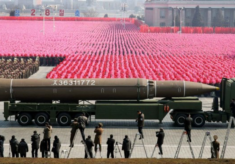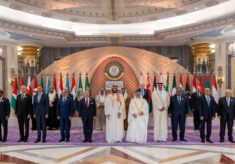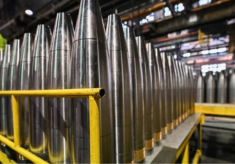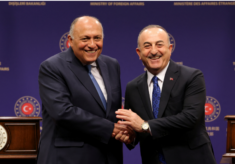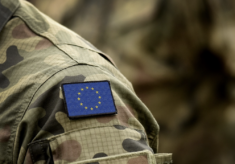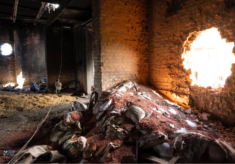Stationing of nuclear weapons on allies territory has been a common practice for NATO since the early days of the cold war.Such a practice was due to the geographic asymmetries which were, and still are, a feature of the European strategic theatre. Indeed once the Soviet Union became capable of matching the US on the nuclear terrain, the Nato Alliance became more vulnerable than the Soviet Union to nuclear weapons.It was easier for Russian nuclear delivery means to reach Western Europe, where hundreds of thousands of US servicemen were deployed, than for the US to reach the Soviet territory from the US. Since the early fifties, and until the early nineties, the stationing of US nuclear weapons in Europe became one of the pillars of Nato security: their number reached a peak of around 7,000 warheads during the early eighties. These deployments aimed not only at counterbalancing nuclear asymmetries; they were also a way of reassuring European allies about the continued US commitment as well as a warning that military actions against a U.S. ally could escalate into a full-fledged nuclear war. As tension with the Soviet Union ended during the early 1990s, the U.S. withdrew thousands of nuclear weapons from its overseas bases, leaving only a residual deployment in a few NATO countries.
The relevance of stationing abroad for the Soviet Union,because of its proximity to Western Europe,was not comparable to Washington’s strategic interest for forward deployment. In spite of that, Moscow did deploy tactical nuclear weapons in some Warsaw Pact members’ territory. However, the most clamorous and controversial case of Soviet stationing abroad took place not in Europe but in Cuba: it provoked the dramatic 1962 missile crisis. The Soviet nuclear missiles were removed from Cuba under the tacit understanding that the US would have removed their intermediate-range missiles stationed in Europe.
Stationing of nuclear weapons in foreign countries, although not explicitly authorized, is not forbidden by the Non Proliferation Treaty (NPT). The issue belogs to the many juridical grey areas existing in the Treaty. No one has challenged so far the full NPT membership of NATO or Warsaw Pact countries hosting the US or Soviet nuclear weapons.The question of “nuclear sharing” is more controversial.The fact that NATO non nuclear weapons countries are associated to nuclear military decisions and that their delivery means are capable of carrying and eventually delivering US nuclear weapons has occasionally been questioned in the mulitilateral fora. However the very legality of such a situation was not challenged at the level of the International Court of Justice, and the declaration, made by some Nato Countries (including Italy) at the moment of signing the NPT about the compatibility of the Treaty’s provisions with their Nato engagements, was not disputed.
All Soviet nuclear weapons in Eastern Europe were removed after the collapse of the Warsaw Pact. At the same time all US weapons were also withdrawn from Western Europe with the exception of around 200 US nuclear warheads which, according to the international press,are still being kept in five Nato non nuclear weapons countries.
The removal of these residual US nuclear forces became the number one objective of European anti- nuclear organizations after the end of the cold war.In the euforia which followed President Obama’s historic address in Prague such a removal was included in appeals by eminent European personalities in support of the drive in favor of nuclear disarmament launched in 2008 by four bipartisan US former secretaries of state and defense ans senators ( Kissinger, Schultz, Perry and Nunn).The removal of the US nuclear weapons became part of the platforms of several European political parties especially in Germany.This drive was however never strong enough and quick enough to grasp the window of opportunity offered by the Obama administration which at the time would have been open in principle to consider a removal of the deployed weapons. The traditional division of Europe on nuclear issues and the absence of a European caucus in Nato did not allow to reach a common stand in favor of a removal. The Russian action in Georgia, the annexation of Crimea and Moscow’s involvement in undermining the territorial integrity of Ukraine in spite of its 1994 committment in the Budapest Memorandum not to do so, made the removal of the US nuclear warheads more problematic. Consequently a new dynamic prevailed in Nato through the annoncement of the deployment in Europe of the modernized B61-12 warhead which will become available in 2020 and the acquisition by several European countries of new US nuclear DCA(Dual Capable Aircraft), the F35.This makes the withdrawal of the US nuclear forces less likely especially if, as some have suggested,it would take the form of an uniliteral withdrawal.The project might be more palatable to Nato if it took the form of a bilateral deal with Russia. In his speech in Berlin in 2013 President Obama suggested to ” work with our NATO allies to seek bold reductions in U.S. and Russian tactical weapons in Europe”. But no response came from the Kremlin. On the contrary Russia which possesses and probably deploys in its European territory a much larger number of tactical nuclear weapons than the US, has shown no interest in a reduction. Moscow has recently deployed in Kaliningrad – in the heart of Europe – nuclear-capable Iskander missiles. The gist of President Putin’s March 1 “State of the Union” adress is all in the direction of an arms race.The mood has changed also in NATO:in the 2016 Warsaw Summit declaration it is specified that “NATO’s nuclear deterrence posture also relies, in part, on United States’ nuclear weapons forward-deployed in Europe”. The language of the new 2018 US Nuclear Posture is very blunt:”we will work with NATO to best ensure -and improve where needed-the readiness,survivability and operational effectiveness of DCA based in Europe”. The present general trend, far from seeking a reduced reliance on nuclear weapons, is now heading towards a new nuclear arms race. A unilateral withdrawal of the residual US nuclear forces, despite Europe’s growing uneasiness with the Trump administration, is no longer in the cards. Only the path of a negotiation, either bilateral or plurilateral, aiming at a legally binding, balanced and verifiable instrument on reductions by both sides, is feasable today. The fact that Russia and the new US administration show presently no interest in this deal,should not be an impediment for Europe to pursue such an objective.
Carlo Trezza – member of the Nato Defense College Foundation Scientific Committee. He was Italy’s Ambassador for Disarmament and Non proliferation in Geneva, Chairman of the Missile Technology Control Regime and of the UN Secretary General’s Advisory Board for Disarmament Matters in New York.

